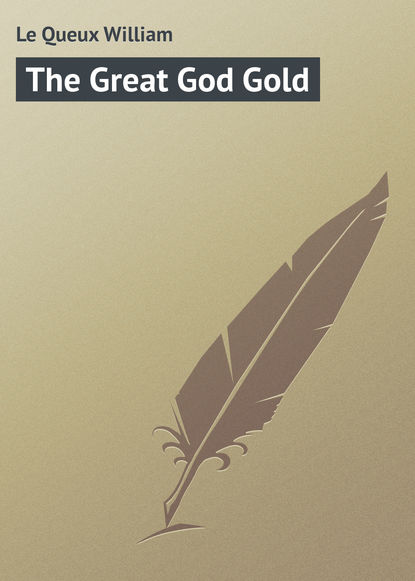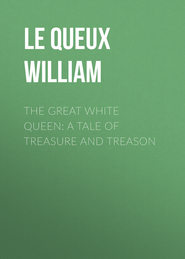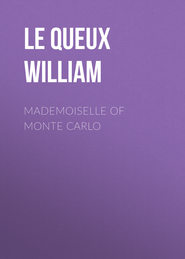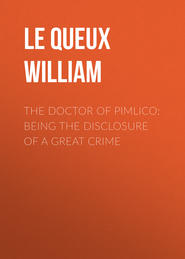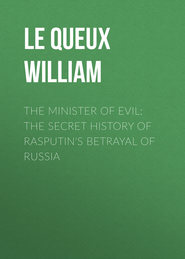По всем вопросам обращайтесь на: info@litportal.ru
(©) 2003-2024.
✖
The Great God Gold
Настройки чтения
Размер шрифта
Высота строк
Поля
“How was he dressed?”
“Fairly well. He wore a dark-grey suit and a black bow cravat.”
“His searches were confined to Ezekiel?”
“No, not exactly. He copied some references from our earliest manuscript of Deuteronomy – you examined it a few months ago, I remember. The thirty-second chapter seemed to attract him, as he copied it in its entirety.”
“Ah, that’s the Song of Moses,” remarked the Professor. ”‘Give ear O ye heavens, and I will speak; and hear O earth, the words of my mouth.’ I wonder what can be his object,” he added thoughtfully.
“He merely told me that he was making an investigation in order to put a remarkable theory to the test.”
Griffin started. A remarkable theory was being put to the test by this stranger! Was it possible that another scholar was in possession of the dead man’s secret, besides himself!
He held his breath. Then, when a few moments later he had recovered himself, he began to make many inquiries concerning the unknown foreigner. But it was already past four o’clock, and the assistant-keeper had his train to catch to his home at Epping. Therefore he declared that he knew no more, and taking the precious manuscript, replaced it with the others and hastily bade the Professor “Good afternoon.”
“Good afternoon,” was the old man’s reply. “I am sorry you are in such a hurry. I’ll return to-morrow.”
Then he struggled into his overcoat, and left the Museum full of vague misgivings.
Already dark outside, the street-lamps were lit, and the steady downpour was unceasing. But he trudged across to the photographer’s, and there obtained the scraps of half-destroyed manuscript, which only a few moments before had been brought back from the studio at Acton.
“We shall have prints ready for you to-morrow evening,” said the manager. “I’ll send them to you, shall I?”
“No, don’t do that,” Griffin said quickly. “I would rather call for them. I’ll be in about this time to-morrow.”
Then placing the packet in his pocket, he walked along Oxford Street in the direction of Tottenham Court Road.
His mind was full of the alarming discovery that another person was investigating the same problem as himself. This meant that the secret was known, and if known to another, what more likely than that the stranger possessed a complete manuscript – a manuscript which gave the context, not only of the curious statement, but of the directions of how the truth could be verified.
Of the latter, he possessed only that one scrap of written manuscript. There must have been other folios, but all were, alas! missing. They had, no doubt, been consumed by the flames before the eyes of the dying man.
He was beside himself with anxiety. It could not have been Diamond himself who had been at the Museum, for the Doctor was not a Hebrew scholar and, besides, he had been told by Frank that the man was badly deformed. Therefore, his deformity would certainly have impressed itself upon the assistant-keeper.
By the “Tube” from Tottenham Court Road Station he travelled to Notting Hill Gate, and turning into Pembridge Gardens, let himself in with his latch-key.
Frank was with Gwen in the drawing-room, and they were taking their tea tête-à-tête when the old man entered. After luncheon he had taken her to a matinée, and the happy pair had only just returned.
“Tell me, Frank,” asked the Professor, almost before he had time to greet him, “did that friend of yours, Diamond, show those papers to any one else besides you, do you think?”
“Certainly not. Why?” inquired the young man in some surprise.
“Oh, nothing,” replied the Professor with slight hesitation. “I – well – I only thought that it would be a little unfair to trouble me if somebody else had already been making any researches.”
“Nobody has seen it save myself, I can assure you. Diamond is a most careful and cautious man,” Frank declared. “He brought them straight over from Paris, and came at once to me.”
“He might possibly have shown them to somebody in Paris,” the elder man suggested.
“I asked him, and he distinctly told me that nobody save myself had set eyes upon them.”
The Professor sank into an armchair, and in silence took the cup of tea which Gwen handed to him.
“You’re tired, dad,” she said. “I see it in your face!”
“A little, dear. I’ve been at the Museum all day.”
“I wish you wouldn’t go to that horrid old place. It always gives you a headache, you know,” said the girl anxiously.
“Ah, my child,” replied the old man with a sigh, “the place holds, for me, much that is interesting in life – in fact all that is interesting, except your own neat little self.”
The girl laughed merrily, declaring that compliments should not be paid to her in the presence of Frank.
But the old man, sighing rather wearily, said:
“Well, Gwen, it’s the truth. I have nothing much to live for, except yourself and my studies. When your dear mother died, the sun of my life was extinguished. And now you have grown up to take her place.”
She and Frank exchanged quick meaning glances.
“I hope always to live near you, dear old dad, even after we’re married,” she said. “I shall never desert you.”
Her father smiled, saying:
“That is what every girl says to her parents before marriage. Few, however, fulfil their promise.”
“Well, dad, don’t let’s talk about parting till the time really comes,” exclaimed his daughter, in an endeavour to change the topic of conversation. Only a moment prior to the Professor’s return she and Frank had been discussing the future, and considering that very point.
“Have you been making researches in the Museum in connection with the burnt papers, Professor?” asked young Farquhar, who, standing in his well-cut suit of blue serge, looked a splendid specimen of the lithe, athletic young Englishman.
“Yes, I have.”
“And the result?”
The Professor shook his head in the negative.
“At present I have failed to discover the slightest title of corroboration of your friend Doctor Diamond’s wonderful theory. The construction which may be placed upon the scrappy statements are many, but none upon which I can yet form any absolute conclusion.”
He made no mention that he had caused photographic negatives of the burnt papers to be secured, or that, within his pocket, there reposed an accurate copy of the accepted original of the Book of Ezekiel.
“You are still in opposition, then, to Diamond’s theory?” asked the young man.
“Of course.”
“But why?”
The Professor drank his tea slowly, and replaced the cup upon the little table.
“Well,” he answered with much deliberation, “because Biblical history is entirely opposed to it. The first Book of Kings relates in detail the building of the temple by Solomon in B.C. 1012, the dimensions of the Porch, the Holy Place, and the Holy of Holies. Within and without the building was conspicuous by the lavish use of gold from Ophir and Parvaim. Above the sacred Ark, which was placed as of old in the Most Holy Place, were made new cherubim, one pair of whose wings met above the Ark and another pair reached to the walls behind them. In the Holy Place, besides the Altar of Incense, which was made of cedar overlaid with gold, there were seven golden candlesticks instead of one, and the table of the shew-bread was replaced by ten golden tables bearing beside the shew-bread the innumerable golden vessels for the service of the sanctuary. Instead of the brazen laver we know that there was a ‘molten sea’ of brass, a masterpiece of Hiram’s skill, for the ablutions of the priests. It was called a ‘sea’ from its great size, being five cubits in height ten in diameter and thirty in circumference, and containing, it is estimated, about sixteen thousand gallons of water. It stood upon twelve oxen, three towards each quarter of the heavens, and all looking outwards. The brim itself, or lip, was wrought ‘like the brim of a cup, with flowers of lilies,’ or curved outwards like a lily or lotus flower. The front of the porch was supported, after the manner of some Egyptian temples, by the two great brazen pillars Jachin and Boaz, eighteen cubits high, with capitols of five cubits more, adorned, as we are told, with lily-work and pomegranates.
“But,” he added, “all this is historical fact. In the temple reposed the most valuable collection of gold and jewels ever gathered together, and the dedication of the House of Jehovah, the God of Israel, was the grandest ceremony ever performed under the Mosaic dispensation. And if you read 1 Kings, viii, and 2 Chronicles, v, you will there learn how, at the ceremony, Jehovah gave the sign of His coming to take possession of His house. Then Solomon built his own house, placing within it the wonderful ‘wealth of Ormuz and Ind,’ and to him came the Queen of Sheba, an event which marked the culminating-point of his glory. The very king who built the glorious temple, and to whom Jehovah had twice given solemn warning in his old age, however, and under the influence of his wives, turned his heart away from God. He served Ashtoreth, the moon-goddess of the Zidonians, and Moloch, the ‘horrid king’ whom the Ammonites worshipped with human sacrifice. Solomon died in B.C. 976, and very shortly after his death the prophecy of Ahijah was fulfilled: his kingdom was rent in twain, and the parts, weakened by the disruption, formed the separate kingdoms of Judah and of Israel.”
“Fairly well. He wore a dark-grey suit and a black bow cravat.”
“His searches were confined to Ezekiel?”
“No, not exactly. He copied some references from our earliest manuscript of Deuteronomy – you examined it a few months ago, I remember. The thirty-second chapter seemed to attract him, as he copied it in its entirety.”
“Ah, that’s the Song of Moses,” remarked the Professor. ”‘Give ear O ye heavens, and I will speak; and hear O earth, the words of my mouth.’ I wonder what can be his object,” he added thoughtfully.
“He merely told me that he was making an investigation in order to put a remarkable theory to the test.”
Griffin started. A remarkable theory was being put to the test by this stranger! Was it possible that another scholar was in possession of the dead man’s secret, besides himself!
He held his breath. Then, when a few moments later he had recovered himself, he began to make many inquiries concerning the unknown foreigner. But it was already past four o’clock, and the assistant-keeper had his train to catch to his home at Epping. Therefore he declared that he knew no more, and taking the precious manuscript, replaced it with the others and hastily bade the Professor “Good afternoon.”
“Good afternoon,” was the old man’s reply. “I am sorry you are in such a hurry. I’ll return to-morrow.”
Then he struggled into his overcoat, and left the Museum full of vague misgivings.
Already dark outside, the street-lamps were lit, and the steady downpour was unceasing. But he trudged across to the photographer’s, and there obtained the scraps of half-destroyed manuscript, which only a few moments before had been brought back from the studio at Acton.
“We shall have prints ready for you to-morrow evening,” said the manager. “I’ll send them to you, shall I?”
“No, don’t do that,” Griffin said quickly. “I would rather call for them. I’ll be in about this time to-morrow.”
Then placing the packet in his pocket, he walked along Oxford Street in the direction of Tottenham Court Road.
His mind was full of the alarming discovery that another person was investigating the same problem as himself. This meant that the secret was known, and if known to another, what more likely than that the stranger possessed a complete manuscript – a manuscript which gave the context, not only of the curious statement, but of the directions of how the truth could be verified.
Of the latter, he possessed only that one scrap of written manuscript. There must have been other folios, but all were, alas! missing. They had, no doubt, been consumed by the flames before the eyes of the dying man.
He was beside himself with anxiety. It could not have been Diamond himself who had been at the Museum, for the Doctor was not a Hebrew scholar and, besides, he had been told by Frank that the man was badly deformed. Therefore, his deformity would certainly have impressed itself upon the assistant-keeper.
By the “Tube” from Tottenham Court Road Station he travelled to Notting Hill Gate, and turning into Pembridge Gardens, let himself in with his latch-key.
Frank was with Gwen in the drawing-room, and they were taking their tea tête-à-tête when the old man entered. After luncheon he had taken her to a matinée, and the happy pair had only just returned.
“Tell me, Frank,” asked the Professor, almost before he had time to greet him, “did that friend of yours, Diamond, show those papers to any one else besides you, do you think?”
“Certainly not. Why?” inquired the young man in some surprise.
“Oh, nothing,” replied the Professor with slight hesitation. “I – well – I only thought that it would be a little unfair to trouble me if somebody else had already been making any researches.”
“Nobody has seen it save myself, I can assure you. Diamond is a most careful and cautious man,” Frank declared. “He brought them straight over from Paris, and came at once to me.”
“He might possibly have shown them to somebody in Paris,” the elder man suggested.
“I asked him, and he distinctly told me that nobody save myself had set eyes upon them.”
The Professor sank into an armchair, and in silence took the cup of tea which Gwen handed to him.
“You’re tired, dad,” she said. “I see it in your face!”
“A little, dear. I’ve been at the Museum all day.”
“I wish you wouldn’t go to that horrid old place. It always gives you a headache, you know,” said the girl anxiously.
“Ah, my child,” replied the old man with a sigh, “the place holds, for me, much that is interesting in life – in fact all that is interesting, except your own neat little self.”
The girl laughed merrily, declaring that compliments should not be paid to her in the presence of Frank.
But the old man, sighing rather wearily, said:
“Well, Gwen, it’s the truth. I have nothing much to live for, except yourself and my studies. When your dear mother died, the sun of my life was extinguished. And now you have grown up to take her place.”
She and Frank exchanged quick meaning glances.
“I hope always to live near you, dear old dad, even after we’re married,” she said. “I shall never desert you.”
Her father smiled, saying:
“That is what every girl says to her parents before marriage. Few, however, fulfil their promise.”
“Well, dad, don’t let’s talk about parting till the time really comes,” exclaimed his daughter, in an endeavour to change the topic of conversation. Only a moment prior to the Professor’s return she and Frank had been discussing the future, and considering that very point.
“Have you been making researches in the Museum in connection with the burnt papers, Professor?” asked young Farquhar, who, standing in his well-cut suit of blue serge, looked a splendid specimen of the lithe, athletic young Englishman.
“Yes, I have.”
“And the result?”
The Professor shook his head in the negative.
“At present I have failed to discover the slightest title of corroboration of your friend Doctor Diamond’s wonderful theory. The construction which may be placed upon the scrappy statements are many, but none upon which I can yet form any absolute conclusion.”
He made no mention that he had caused photographic negatives of the burnt papers to be secured, or that, within his pocket, there reposed an accurate copy of the accepted original of the Book of Ezekiel.
“You are still in opposition, then, to Diamond’s theory?” asked the young man.
“Of course.”
“But why?”
The Professor drank his tea slowly, and replaced the cup upon the little table.
“Well,” he answered with much deliberation, “because Biblical history is entirely opposed to it. The first Book of Kings relates in detail the building of the temple by Solomon in B.C. 1012, the dimensions of the Porch, the Holy Place, and the Holy of Holies. Within and without the building was conspicuous by the lavish use of gold from Ophir and Parvaim. Above the sacred Ark, which was placed as of old in the Most Holy Place, were made new cherubim, one pair of whose wings met above the Ark and another pair reached to the walls behind them. In the Holy Place, besides the Altar of Incense, which was made of cedar overlaid with gold, there were seven golden candlesticks instead of one, and the table of the shew-bread was replaced by ten golden tables bearing beside the shew-bread the innumerable golden vessels for the service of the sanctuary. Instead of the brazen laver we know that there was a ‘molten sea’ of brass, a masterpiece of Hiram’s skill, for the ablutions of the priests. It was called a ‘sea’ from its great size, being five cubits in height ten in diameter and thirty in circumference, and containing, it is estimated, about sixteen thousand gallons of water. It stood upon twelve oxen, three towards each quarter of the heavens, and all looking outwards. The brim itself, or lip, was wrought ‘like the brim of a cup, with flowers of lilies,’ or curved outwards like a lily or lotus flower. The front of the porch was supported, after the manner of some Egyptian temples, by the two great brazen pillars Jachin and Boaz, eighteen cubits high, with capitols of five cubits more, adorned, as we are told, with lily-work and pomegranates.
“But,” he added, “all this is historical fact. In the temple reposed the most valuable collection of gold and jewels ever gathered together, and the dedication of the House of Jehovah, the God of Israel, was the grandest ceremony ever performed under the Mosaic dispensation. And if you read 1 Kings, viii, and 2 Chronicles, v, you will there learn how, at the ceremony, Jehovah gave the sign of His coming to take possession of His house. Then Solomon built his own house, placing within it the wonderful ‘wealth of Ormuz and Ind,’ and to him came the Queen of Sheba, an event which marked the culminating-point of his glory. The very king who built the glorious temple, and to whom Jehovah had twice given solemn warning in his old age, however, and under the influence of his wives, turned his heart away from God. He served Ashtoreth, the moon-goddess of the Zidonians, and Moloch, the ‘horrid king’ whom the Ammonites worshipped with human sacrifice. Solomon died in B.C. 976, and very shortly after his death the prophecy of Ahijah was fulfilled: his kingdom was rent in twain, and the parts, weakened by the disruption, formed the separate kingdoms of Judah and of Israel.”





